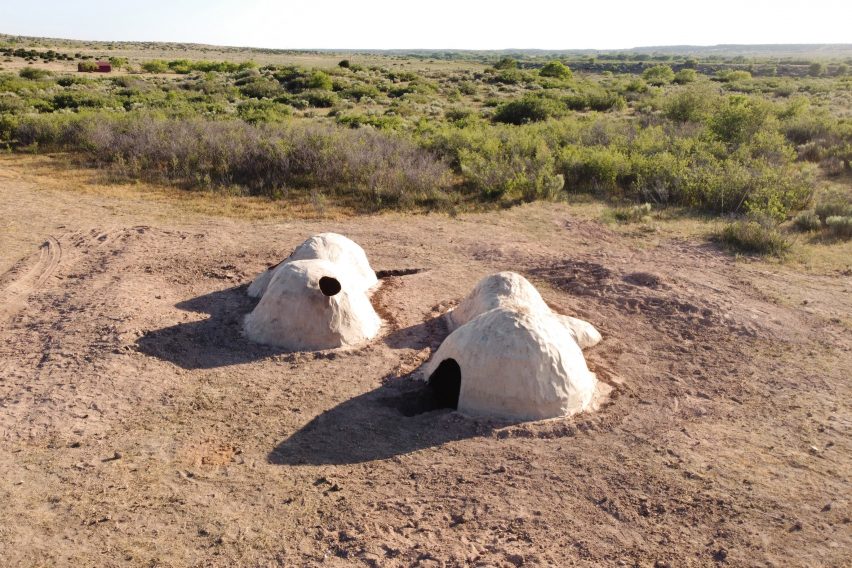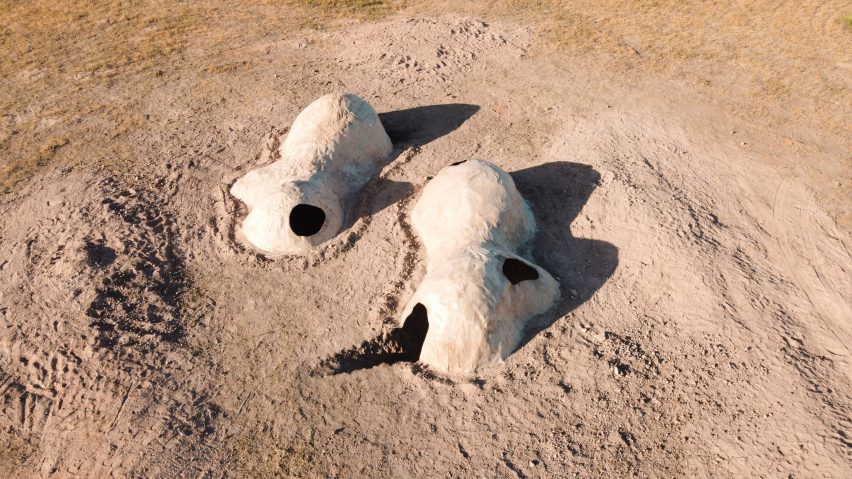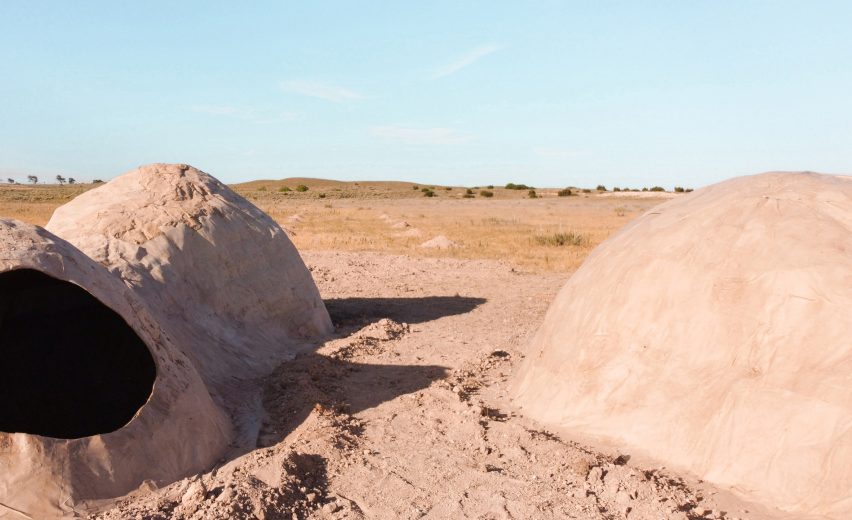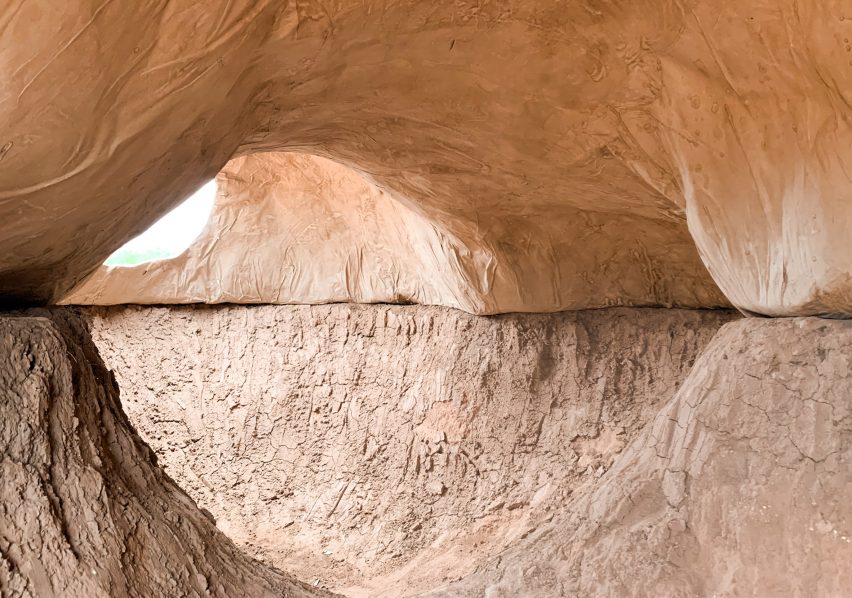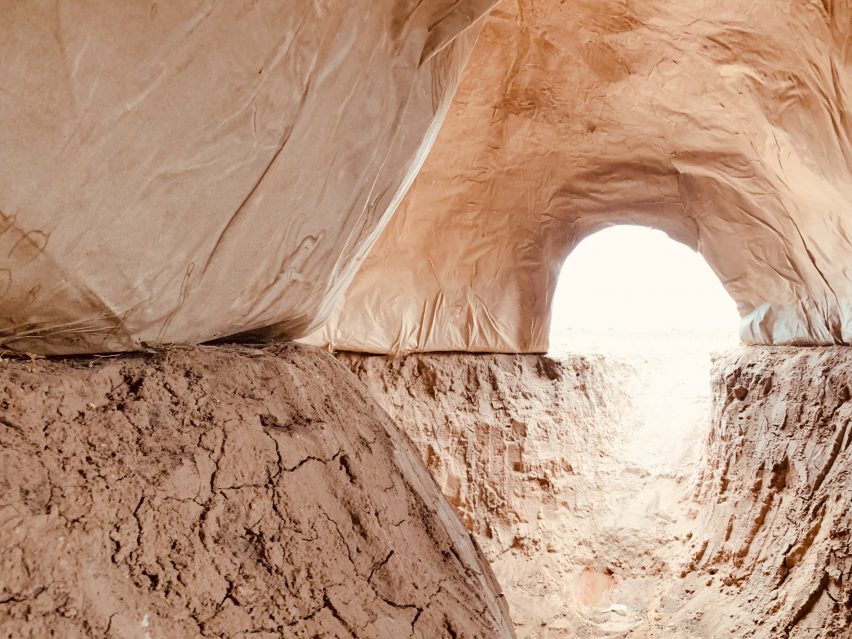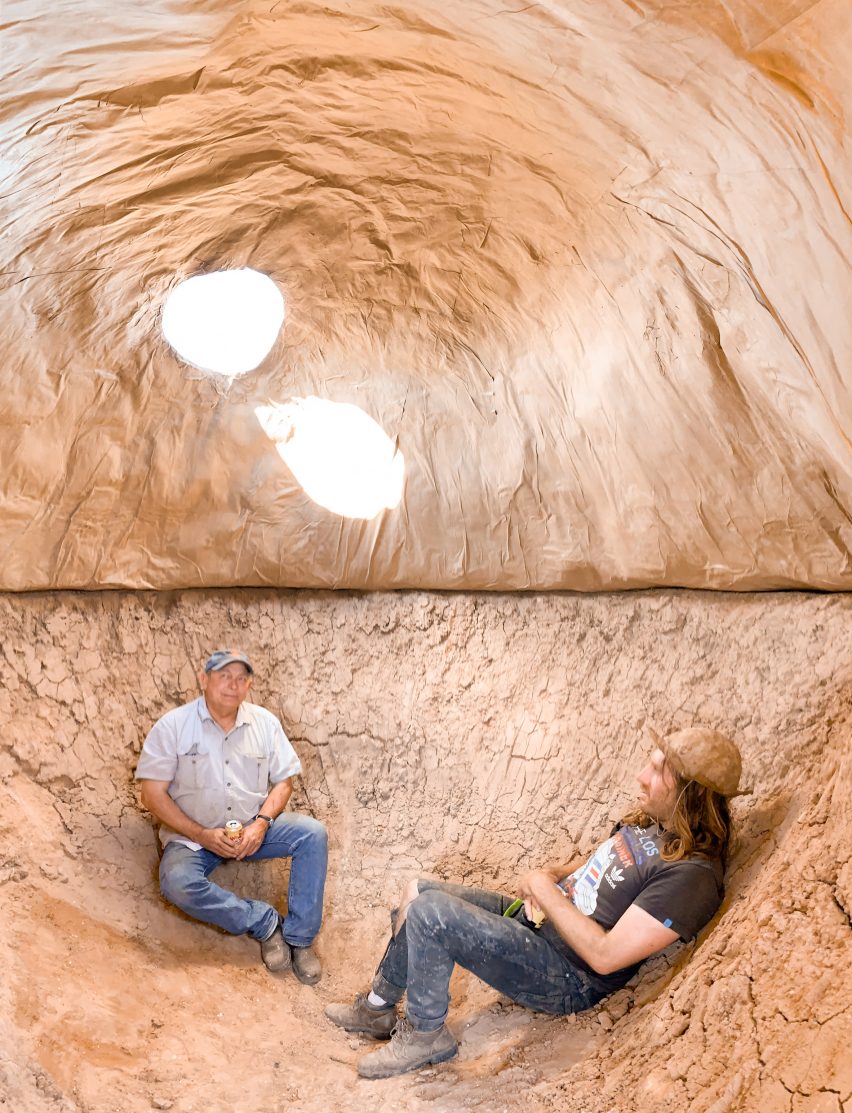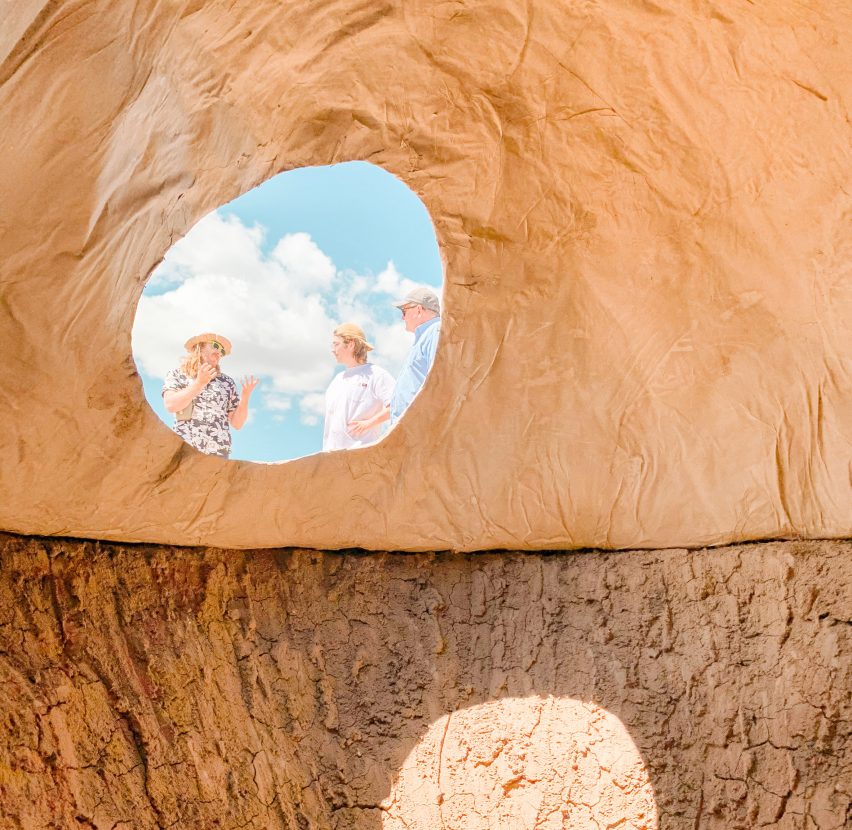Kawanable Kyōsai’s Night Parade of One Hundred Demons (1890)
Kawanabe
Kyōsai (1831–1889), aka “The Demon of Painting”, composed this book of
woodblock illustrations toward the end of a life that had begun during
the Edo period, when Japan was still a feudal country, and ended in the
midst of the Meiji period, when the country was transforming into a
modern state.
Kyōsai
was by all accounts the bad boy artist of his era. Considered both
Japan’s first political caricaturist and one of the first authors of a
manga magazine (Eshunbun Nipponchi), Kyōsai was arrested by the shogunate three times for his commitment to free expression. Also, he made no secret of his love for sake.
Kyōsai’s
version was, according to the Metropolitan Museum of Art which houses
the book, one of the artist’s most popular volumes, offering “a
spectacular visual encyclopedia of supernatural creatures of premodern
Japanese folklore”. (To see more examples of such supernatural
creatures, also see our post on this Edo-era scroll.)
One
can see why it was so popular. Narratively, it paves the way for the
fantastic parade with two woodblocks: the first depicts a group of
adults and children gathered around a coal fire to hear ghosts stories,
the second a man (probably Kyōsai) setting down his calligraphy brush
and extinguishing the lamp in preparation for the night in which the
demons will appear.
Each
double-page of the book is arranged in such a way as to join up with
the next, as though a continuous scroll is divided over the pages of a
book. Though be aware that, of course, the book is bound on the right
and so runs counter to the usual left-to-right of English-language
books, and so also counter to how our gallery below is set up to
display!
Medium
Epoch
Tags
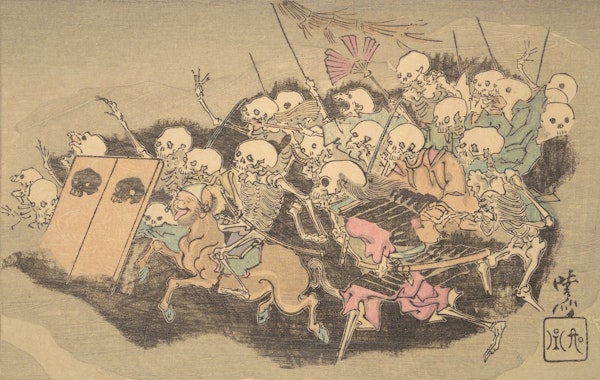
Skeleton soldiers, a horse with the head of a man, and other monsters advance in the growing darkness.
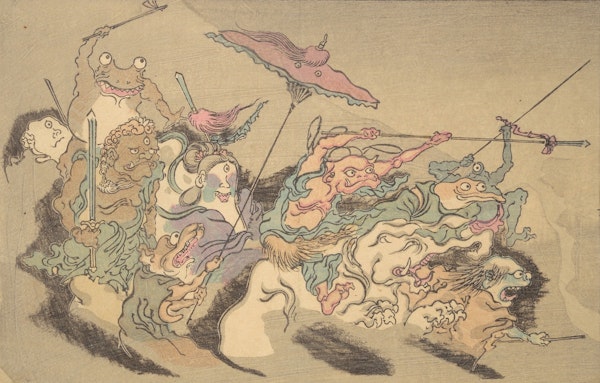
A
one-eyed, malformed goddess, Benzaiten, is accompanied by an elephant,
reptilian monsters, and, at left, the fierce Buddhist guardian Fudō Myōō
holding a sword.
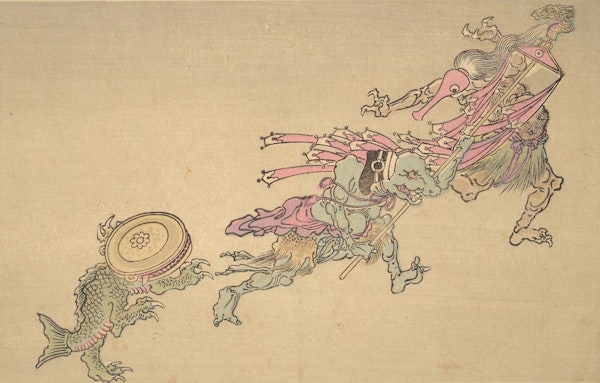
Ritual implements such as a monk’s fly whisk, boots, and a Buddhist gong become monsters.
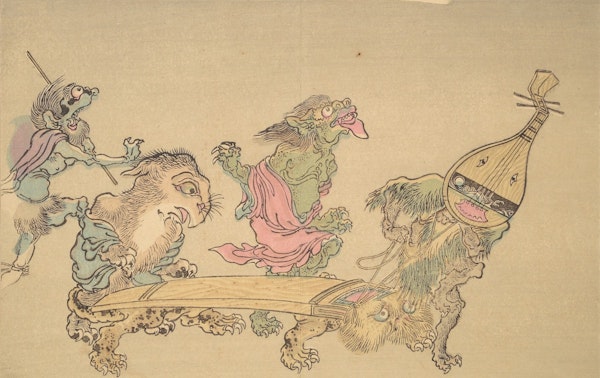
Musical instruments, a lute (biwa) and zither (koto), appear as monsters.
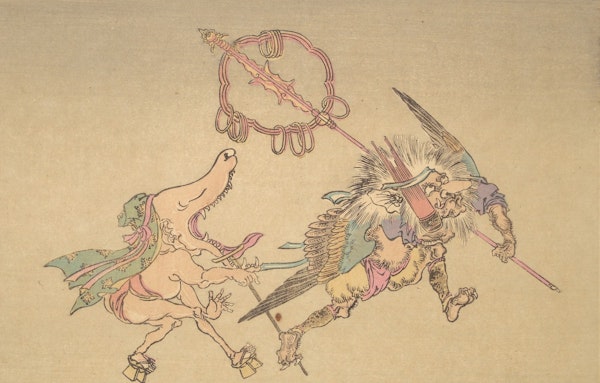
At
right, a demon with a large nose and wings (tengū) carries panpipes
(shō) and a pilgrim’s staff. His servant follows in wooden clogs (geta),
with a wolf-like head and gaping mouth.
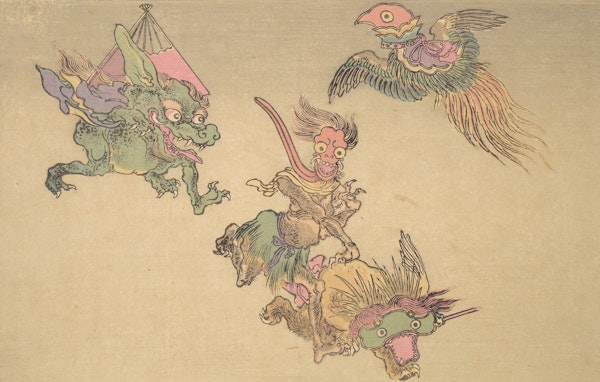
A
helmet for a court dance (bugaku), a chime (kei), ritual scepter
(nyoi), and a folding fan turn into flying and running demons.
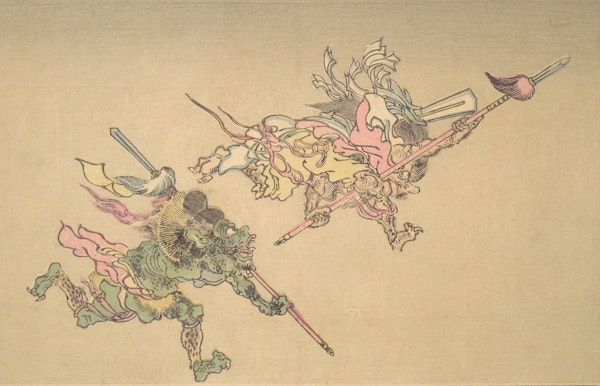
At right, a monster grips a feathered spear. An ogre follows, wearing a nobleman’s cap (eboshi) and carrying a similar spear.
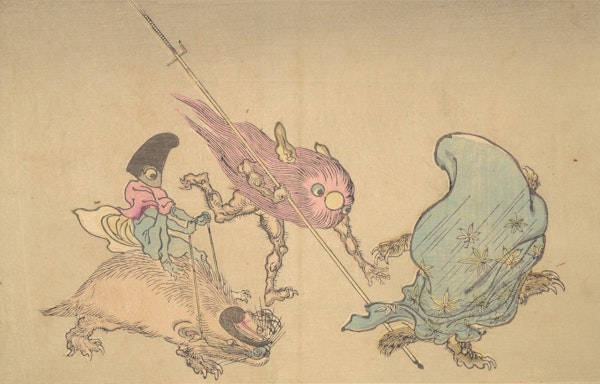
At
left, a small demon riding a badger with a stirrup on its head follows a
hairy headed demon and at far right, a shrouded, furry animal.
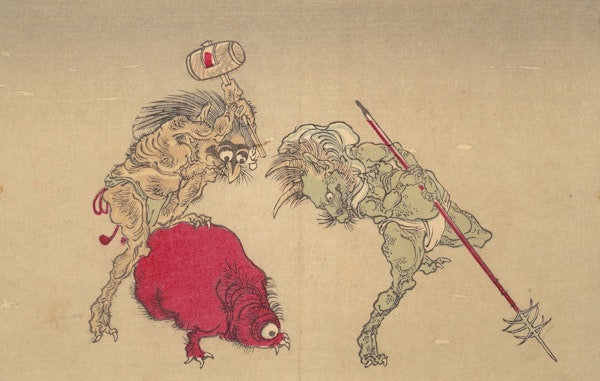
At right, a horned demon bears a spiked spear. At left, a beaked demon wields a wooden mallet over a one-eyed red demon’s head.
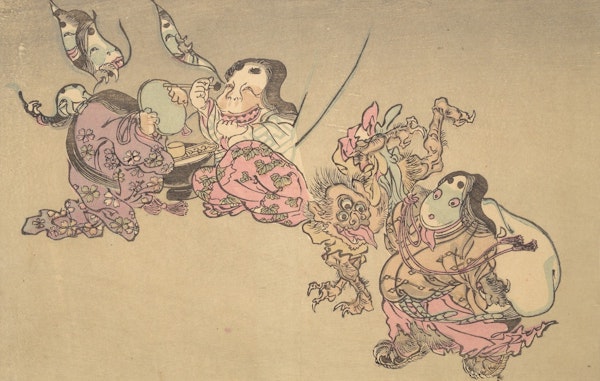
At
left, a monster holds up a mirror for an Otafuku-esque ghoul to apply
black dye to her teeth. At right, a chubby faced figure carries a bag
beside a three-eyed ghoul.
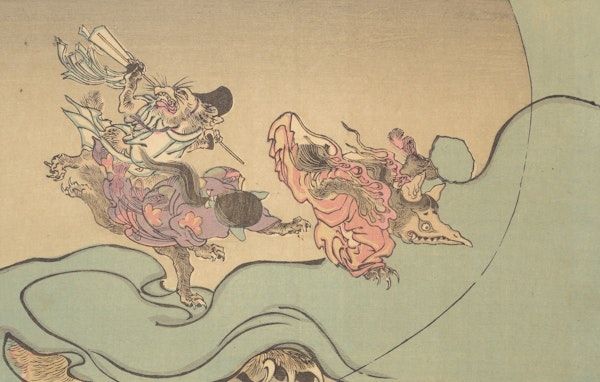
Animal
demons, including one resembling a mad Shinto priest, carouse on an
enormous bolt of cloth. A clawed monster hides underneath.
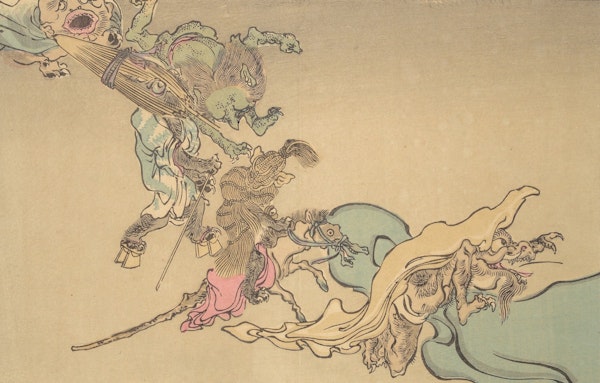
At
left, a beaked demon holds an umbrella monster, followed by a rope
monster riding a hobbyhorse, and a hairy monster with a long, horned
snout (kirin).
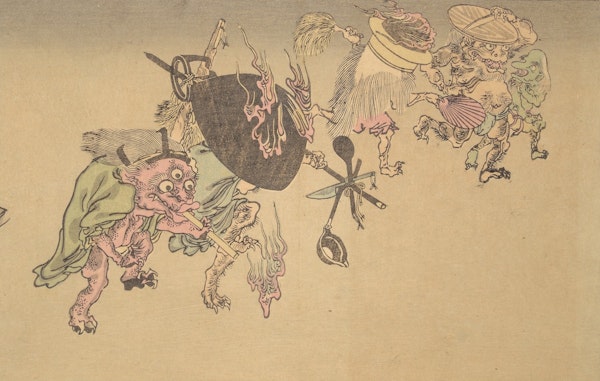
Everyday kitchen utensils such as lids, pots, and trivets have turned into monsters.
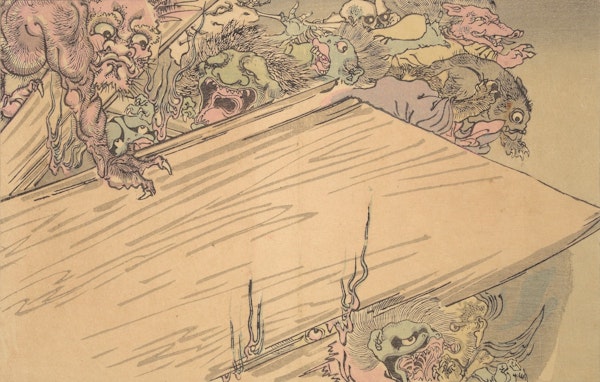
Demons emerge from a large, wooden chest.
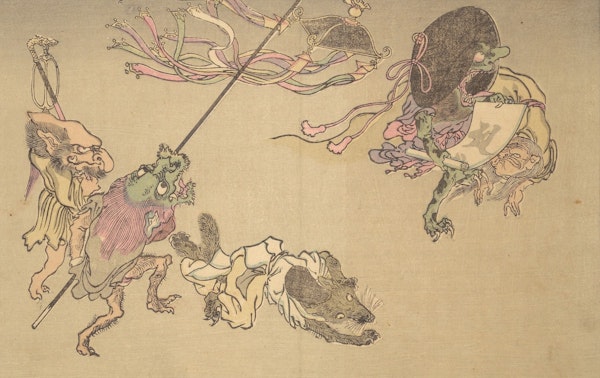
Monsters,
including a badger wearing a courtier’s cap, carry Buddhist ritual
implements, such as a magical scroll inscribed in Sanskrit, at far
right.
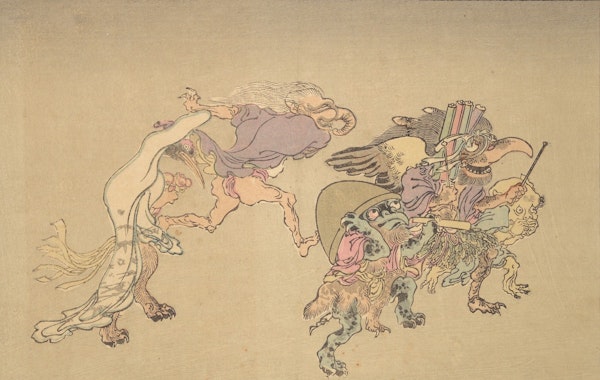
Several monsters, continue the procession, including one with a Buddhist monk’s alms bowl on its head.
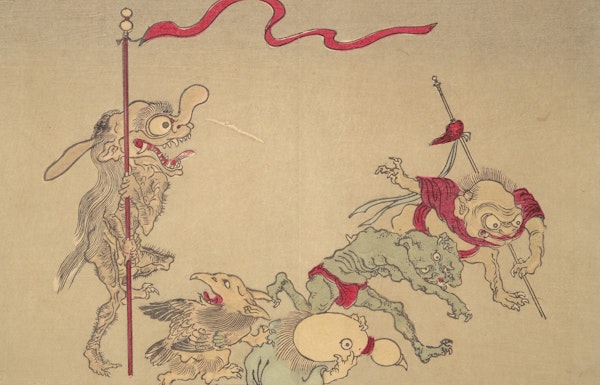
A row of demons, some with banners, another with a gourd-like head, march forward.
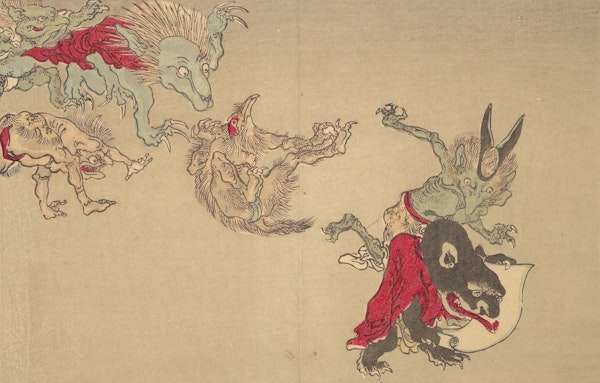
A group of rowdy ghouls appears, including, at far right, a demon in a red robe with a hand scroll.
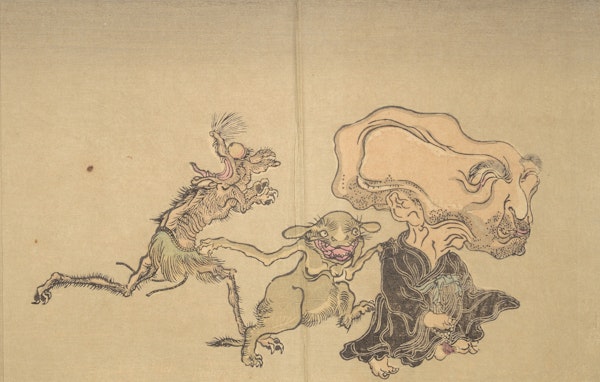
At
right is the demon Nurarihyon, in the guise of an old man with a huge
head and Buddhist rosary. He is followed by rodent-like monsters.
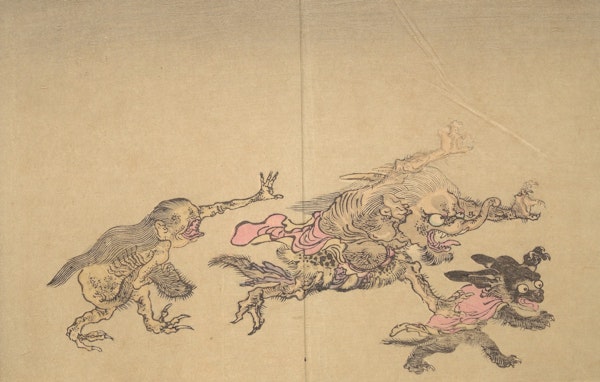
Frightening beasts have features, from left, of a hag, an elephant, and a rabbit.
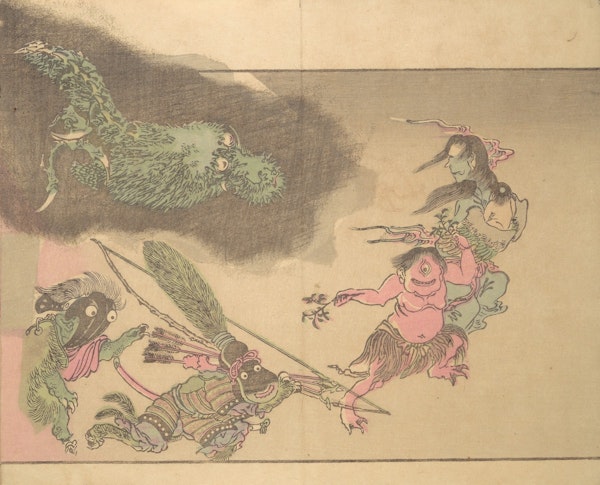
A
green dragon chases demons, including a winged hag, at right, who is
embracing a tiny creature. Below, a pink one-eyed monster wears a grass
skirt.
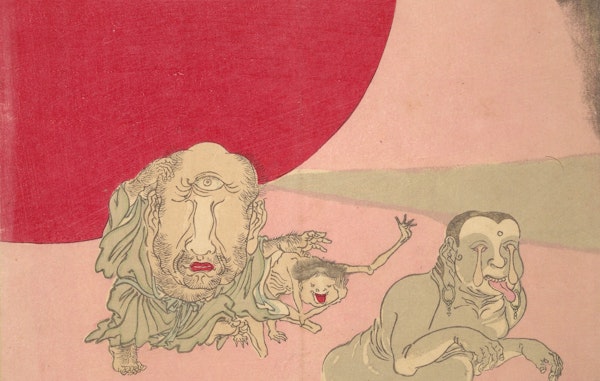
Under
dawn’s red sun, the parade of demons ends. From left: the one-eyed
Aobōzu, who kidnaps children, a water dwelling creature (kappa), and
Nuribotoke, a Buddha-like demon with dangling eyeballs.
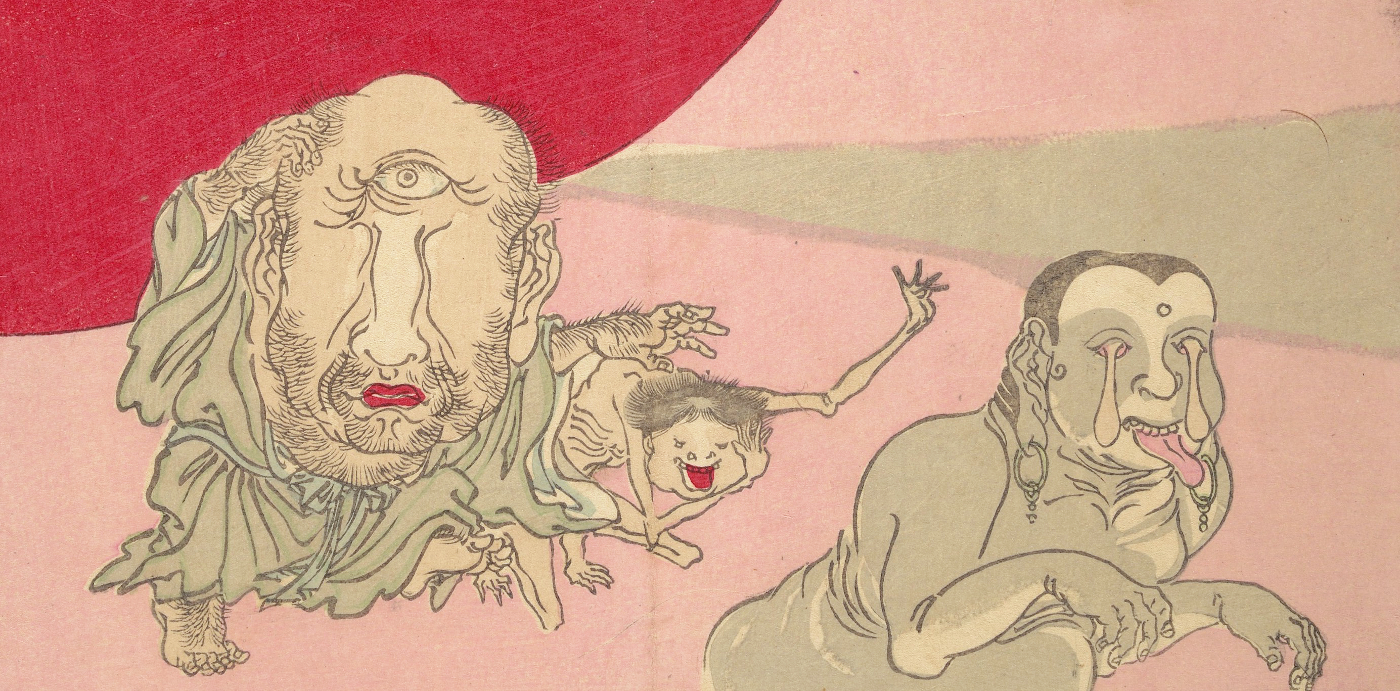
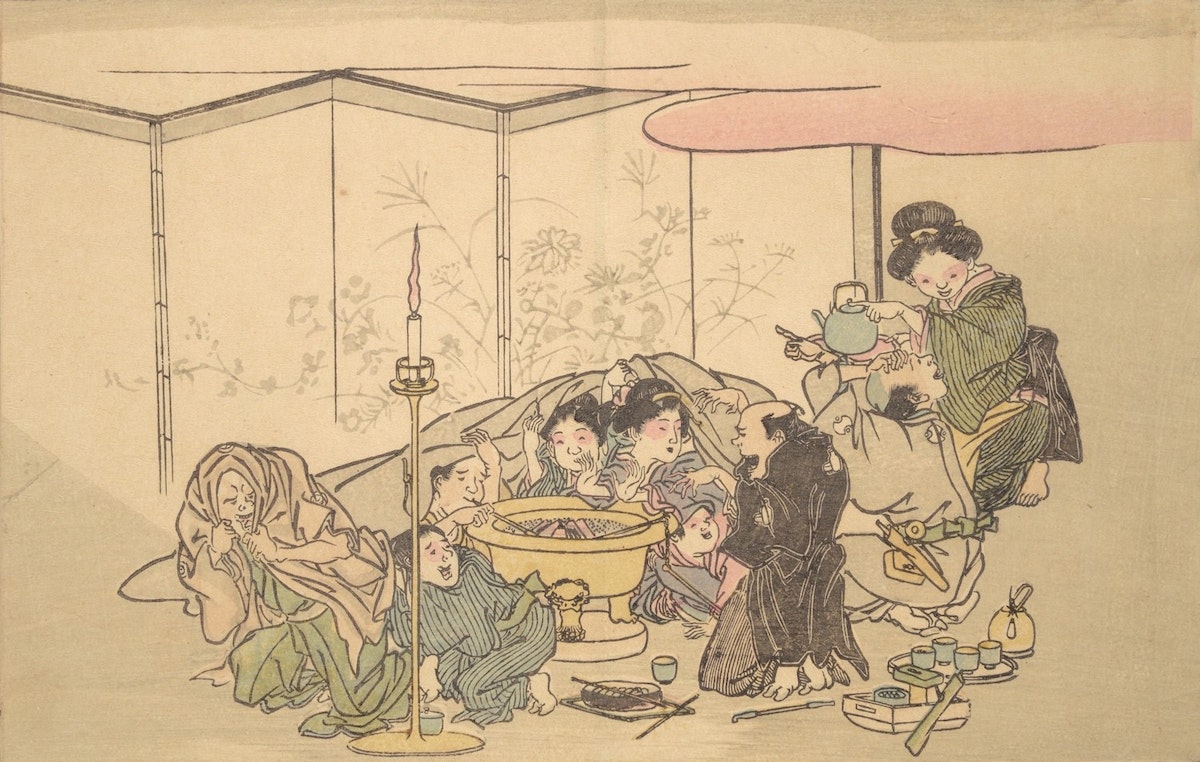
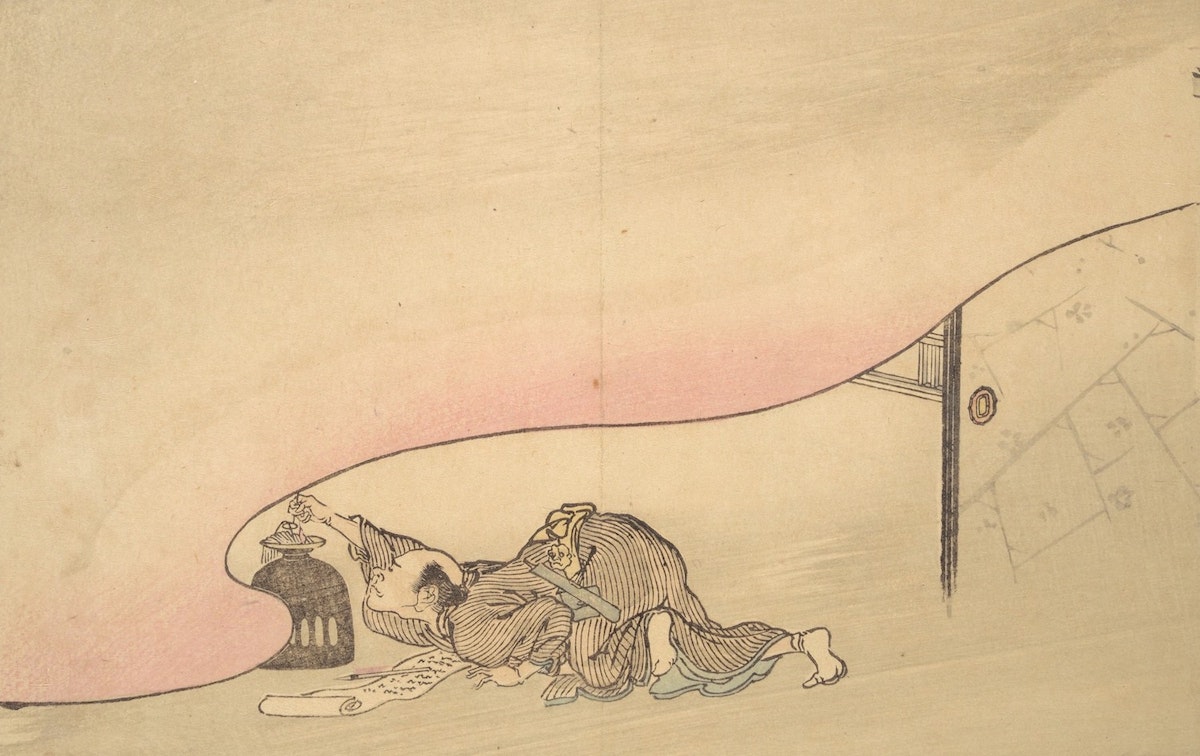





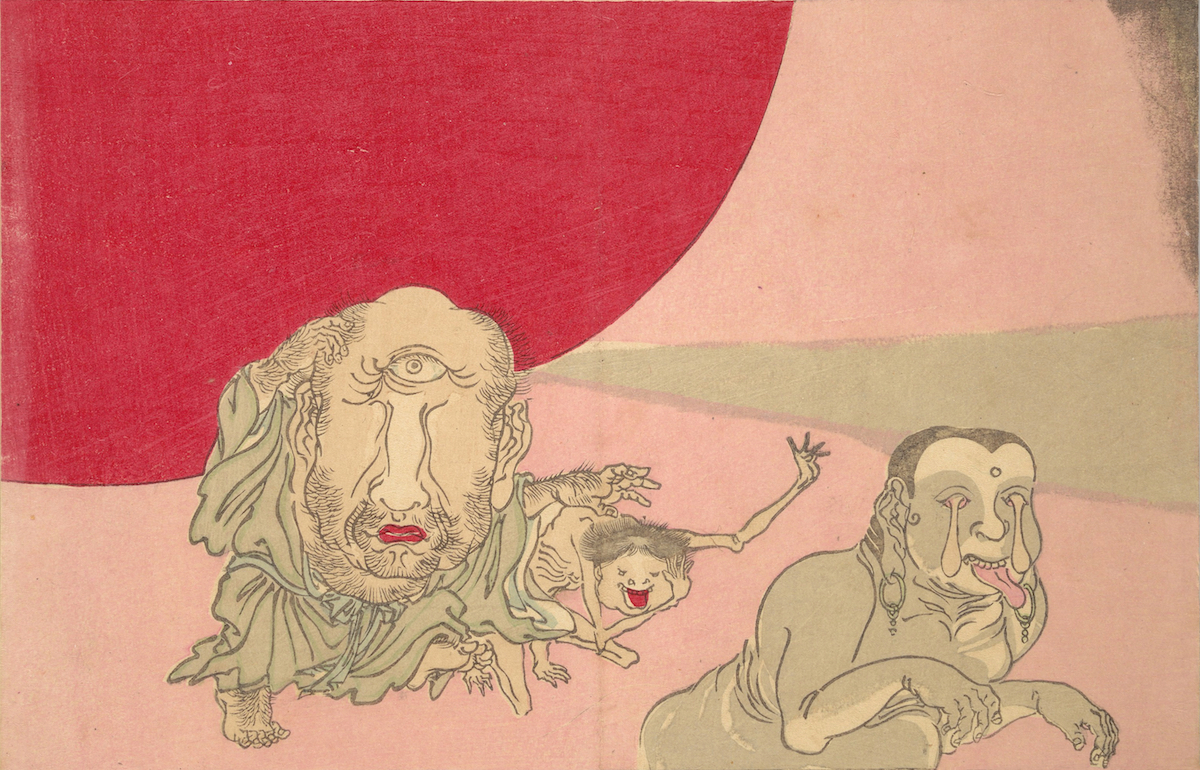
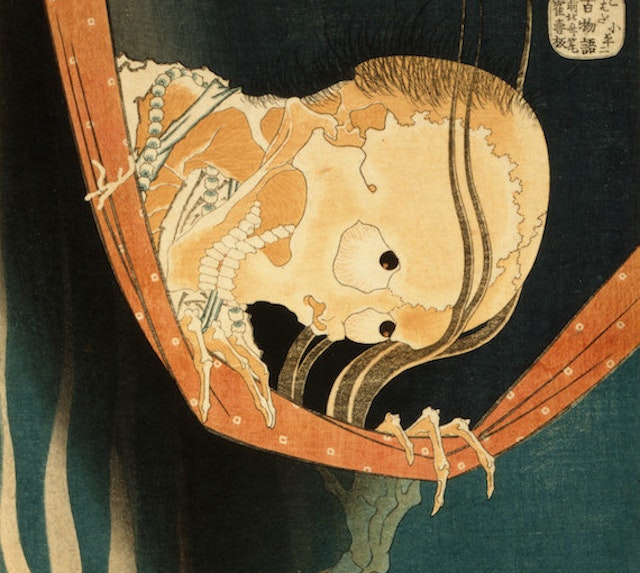
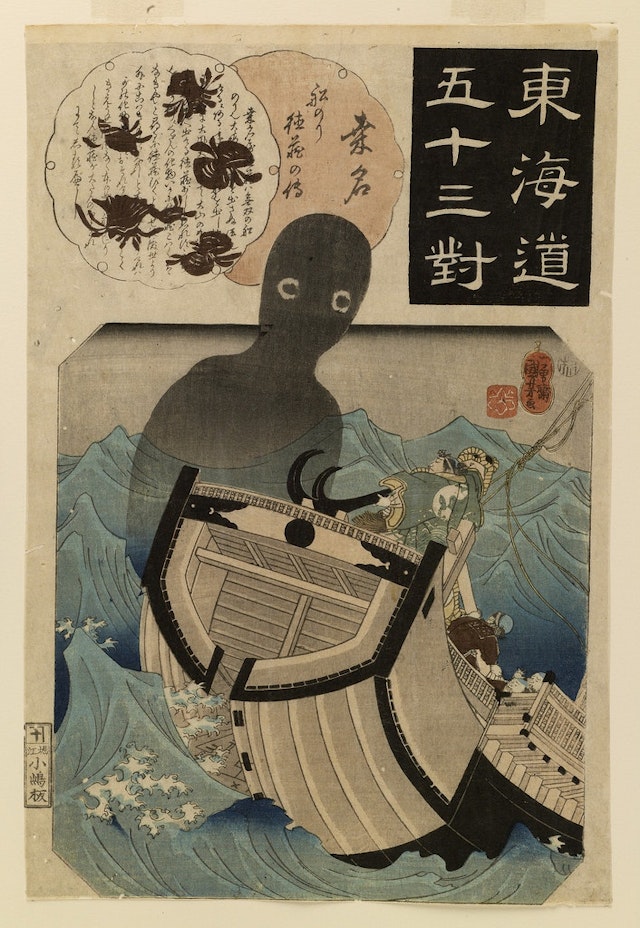
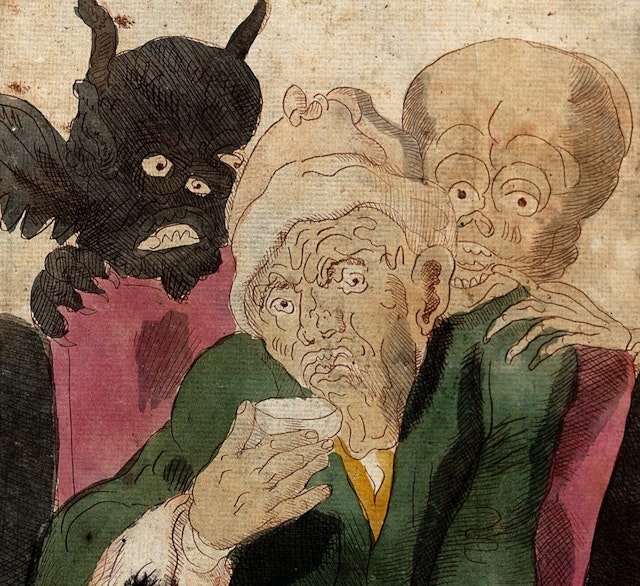
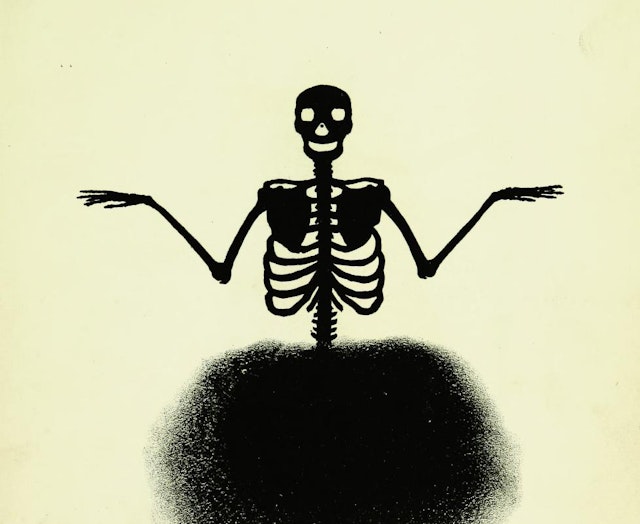
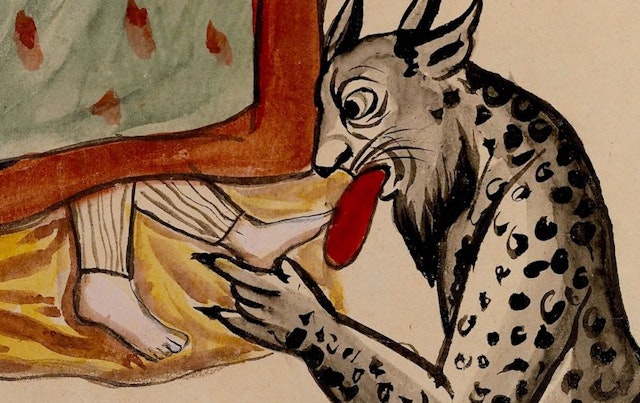
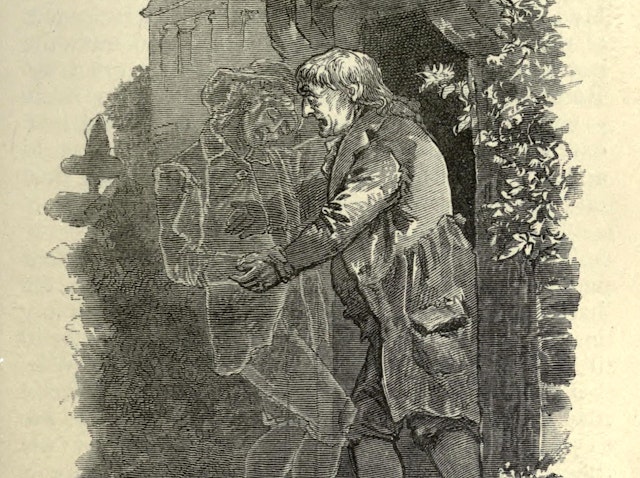
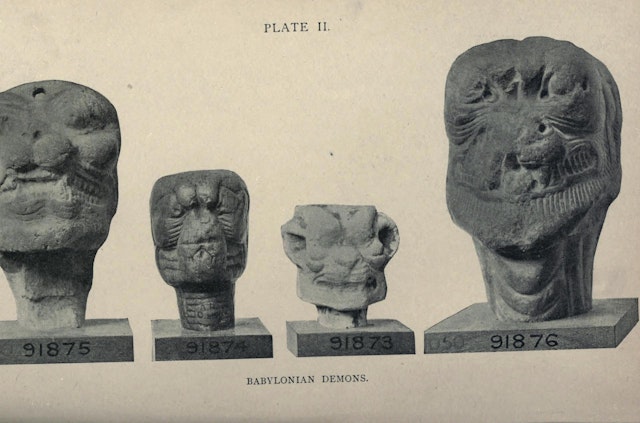
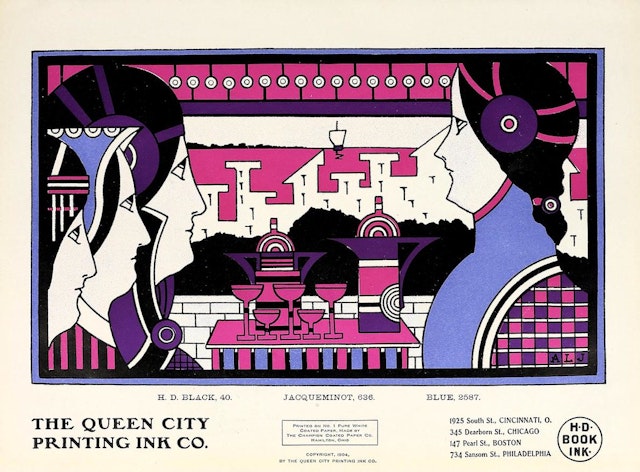


 https://www.earthlymission.com/if-the-planets-were-as-far-away-from-earth-as-the-moon/
https://www.earthlymission.com/if-the-planets-were-as-far-away-from-earth-as-the-moon/